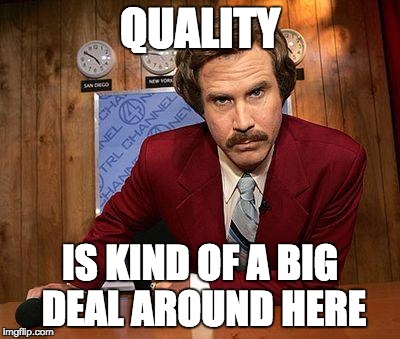![]()
To translate your website, product information, marketing content, E-learning platform, training materials, or any other content faster and cheaper, translation technology comes in handy. And it's not just about the translation tools.
It's about having your system tightly integrated with the translation management software.
Working with our international clients here at ATL, we've seen, first hand, what lack of translation integrations can cause. This article is to show the trouble that you can have from working with a translation agency that does not have their translation software integrated with your system.

First of all, not having any integration on hand, means that the company is simply not advanced, with regards to translation technologies.
It means that the pressure of the technology and know-how will be on you. The amount of time and experience needed for preparation, execution, and wrap-up of localization project calls for support.
The support may come from an experienced localization team and automations. How wonderful would it be to just leave the multilingual translation project to the localization company?
Imagine the following scenario: You wake up in the morning, grab some coffee, simply make a few clicks, and the translation provider takes over from there. This is what your experience with localization should look like. The content should be directly connected to the translation software, and the whole localization process should be effortless.
Is it possible to integrate your work environment or cloud drive with the translation system?
This is the question that you do not need to answer. It is the job of an experienced localization partner to ask about your tools and suggest solutions.
Related content: 50+ Translation Integrations That You Should Know About
The ability to seamlessly supplement client's workflows and streamline the process is what characterizes professional translation providers.

What is the point of sending your content to translation software? What does it provide and why is it so important for you to use translation tools?
Computer Assisted Translation (CAT) tools were created to enhance the speed and quality of the localization process.
There are two very interesting characteristics of the tools, that save money and time for translation clients.
Related content: Translation Memory in Action: How It Helps You Save Money
%20(1).png?width=451&name=translation%20systems%20connection%20(1)%20(1).png)
Integrations allow you to fully automate the process of providing files for translation. Forget email attachments or cloud drives. There is no downloading or uploading involved.
The data never leaves the initial system. It is the content itself that migrates.
The translation segments are being shared with the localization team. The translation company processes the content, makes sure the content is properly prepared for localization, and gets back to you if the design needs to be updated. The need to implement updates may occur if the content is not internationalized.
Internationalization is a concept based on making sure that the software design is free from localization obstacles. It focuses on encoding, the use of variables, box sizes, etc.
Inappropriately designed content may delay programming localization.
Internationalization is not limited to content and formatting, it also concerns the use of graphics, visuals and symbols, and even colors.
Related content: A Guide to Understanding Translation and Localization Terminology
Internationalization minds time and date formats, as well as punctuation separating hours from minutes and seconds. It takes into consideration the differences in the use of 24-hour and 12-hour time format.
It is crucial to go through internationalization carefully before starting programming localization, website translation, software localization, marketing translation, or any other localization project.
It's worth to look at what the localization process is, what and who is involved in it, and what affects its efficiency, timeline and translation quality. This will help you truly appreciate the benefits of translation integrations and to be fully aware of trouble that lack of it may cause.
The localization process that follows the best methods and is designed according to global standards, requires at least two steps: Translation and revision.
Related content: 4 Main Aspects of the Localization Process [Infographic]

Localization process requires a team of professional linguists who cooperate and share the same reference material, instructions and who also know the client’s answers to linguistic queries.
It takes a lot of project management efforts to organize and successfully form these teams. It is much easier when the whole project-related information flow is enhanced by integrated systems.
The trouble starts when because of lack of translation integration with your system, the team needs to be managed manually, and there is no experienced localization project manager assigned to your project.
Professional translation agencies avoid manual file management as much as possible, both for their and for their clients' sake.
The localized content is very often reviewed by in-country reviewers. These are people, who are experts in a subject matter, for example, software testers or distributors. They are native in the translation language, but they are not professional linguists.
Incorporating feedback from these third-party reviewers, who do not own translation tools and would like to work in the final post-production files, can be challenging. Managing so many people and their access to appropriate file batches is a task for automations.
The trouble starts when, lacking of translation integration with your system, the in-country reviewers are left with the task, endless manual steps and no support when it comes to the translation technology. It means delay in your product rollout, multilingual website launch or your software global introduction.
The ability to immediately test the translated content in the original context is another advantage of using integrations. Real-time visibility is inevitably a feature worth mentioning, especially with regards to software localization.
%20(1).png?width=447&name=translation%20cost%20(1)%20(1).png)
Easily tracked costs of localization and quality measurement are crucial for making further decisions.
Having an automated workflow and central repository of the whole localized content is crucial for further savings. The more you translate, the more you save. Maintaining the TM allows you to predict and control translation cost.
%20(1).png?width=459&name=translation%20turnaround%20time%20(1)%20(1).png)
Linking the content repository directly with the translation software boosts efficient handling of language updates, and eliminates manual steps. It means increased productivity and quality. Through tight integrations, you are able to monitor the progress of the localization project.
Having access to information about the stages of the process prevents the project from getting bogged down. You do not have to wait for the whole project to be translated and delivered. This can be done by means of batch deliveries.
Working with a translation agency that lacks integration with your system means slower progress of the localization process and significant delay in achieving your business goals.

Another issue caused by working without your content being integrated with the localization software is lack of control over file versions. Properly integrated systems help to avoid errors while working with several file versions, which in the end, leads to more convenient work with the project.
During the manual management of the file flow and versioning, file versions are most often renamed, and more and more numbers are added to the original file names.
The communication back and forth with the localization manager can make it a complete mess. Referring to a handful of different versions and trying to keep it all under control is very time-consuming. It leads to a wasted employee productivity.
Productivity is very often lost while conducting boring and repeated tasks. It is also very easy to make a mistake while conducting similar operations many times a day, as they become too routine.
The consequences of a wrong version of a file sent for translation may cost a lot of money. In order to prevent that, companies integrate the systems which benefits both, the client and the translation vendor.
Imagine a website localization project. You want to have a multilingual web content. There are all sorts of pages to be translated into, let's say, German, Russian, French, Simplified Chinese, Spanish, Japanese, Portuguese.
Related content: 15 Languages for Translation That You Should Know About
For starters, there are 10 pages that require translation into these languages. After the translation, when the files come back to you, it turns out that the original content needs to undergo slight changes. You have the original content to be updated, together with 7 translated versions. This way a small, multilingual, localization project can turn into an out-of-control mess.

Of course, there are localization project managers who would love to clean this Augean stable, but why not let them focus on other important aspects of your global success and leave the content flow to automations.
The majority of integrations of the CMS or other content authoring tools with localization software enable a clear process monitoring. It clearly shows you which parts of your website have been translated into what languages.
If the process is still running, you can see if the content is in the revision or review stage. Moreover, you can update the content, and in most cases, quickly predict the translation effort.
There is no need to send the whole file again for translation, just provide the content, trigger automated notification, and your localization company will take over from there.
Does that sound appealing?
Lack of implemented integrations often means double data which, in result, means double trouble. In the world of translation rates calculated per word, it simply causes you spending more money on translation. Make sure you work with a translation agency that will not cause you to overspend on localization just because they failed to inform you that they can't or won't integrate with your system.
Related content: 5 Ways That Translation Companies Cause You to Overspend
Working in the system that allows integration between the content repository and translation software enables you to immediately save the translated content into the shared translation memory.
This enables the translation team, to reuse the already translated content for consistency, faster process and profitability. Modern translation tools can easily calculate the translation effort needed to translate content, but they need access to the TM.
Integrations allow real-time content flow and immediate incorporation of potential changes. It gives you transparency with regard to predicting the translation cost. There is also no better way of cross-referencing than having access to the content repository by means of one system.
Related content: Top 10 Translation Tools: a Complete Review
Are you developing applications, designing software, or creating e-learning courses that you want to introduce worldwide? Remember about internationalization and consider a localization partner supporting tight integration with your work environment.
Do you want to avoid trouble while working on online help or technical manual translation? Find a localization partner that will guide you through the whole process and link your authoring tools directly to the CAT tool. It may be the existing integration, API or custom-built solution. There are so many options and none of them involves manual, chaotic, content flow and management.
Do you want to create your multilingual content, website, or software without the localization process slowing you down? Translation is the factor that reduces time-to-market. Imagine a situation where an end user wants to learn something from your website, in their native language.
It would take a lot of time to:
Why not do it faster and more efficiently?
Working with a translation agency that can integrate their translation management software with your system means limits your involvement in the localization process to the minimum. You are only involved in the process in terms of highlighting the actual chunks of text that need translation. The rest of the work will be done by your translation company and the automations.
Allow yourself to take advantage of the technology that enables the two disconnected units (your system and the translation software), to cooperate successfully. The efficiency of such collaboration will save you time and money.
Related content: Why Translation Integrations With Your System Should Matter to You
What is most important, it will empower you to get ahead of your competitors. Properly integrated translation systems save you from headaches of manual tasks, and make the localization process a walk in the park. Lack of such integrations will slow your international business growth down, leaving you behind your competitors and wondering what went wrong.
Now you know the risks of working with a translation agency that lacks integration with your system and the actual perks of working with one that offers such integration. It should be easier for you to make a choice, assuming that you know what translation service you need and how much you want to save on it.
Recommended articles:
How Much Do Translation Services Really Cost [Rates & Factors]
+1 857 777 5741 ext. 203 (business inquiries)
+1 857 777 5741 ext. 205 (career inquiries)
Trylinskiego 16, 10-683
Olsztyn, Poland
Copyright ATL 2025. All Rights Reserved.